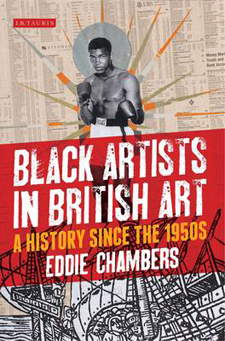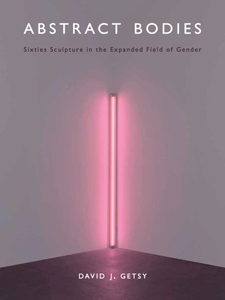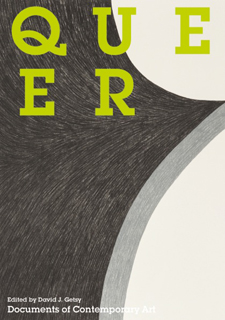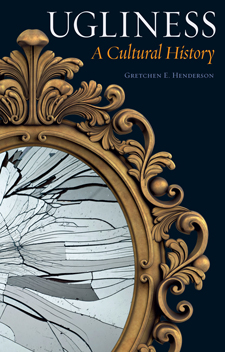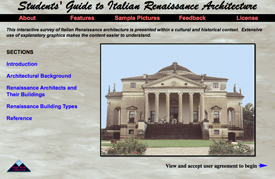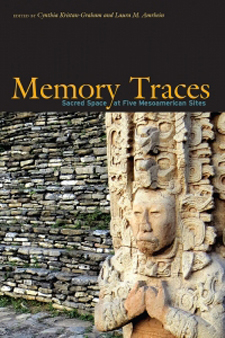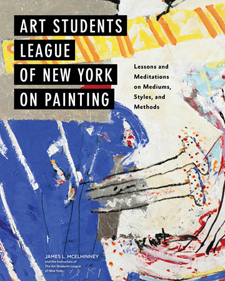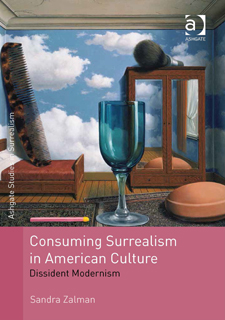CAA News Today
CAA Celebrates National Fair Use Week
posted by Janet Landay, Program Manager, Fair Use Initiative — February 22, 2016
The College Art Association is proud to participate in the 2016 National Fair Use Week. This event is held annually during the last week of February, this year from Monday, February 22, through Friday, February 26. It celebrates the important doctrines of fair use in the United States and fair dealing in Canada and other jurisdictions. In honor of National Fair Use Week, CAA presents the following article about ways its fair use code has been embraced in the year since it was first released.

It’s been exactly one year since CAA published its Code of Best Practices in Fair Use for the Visual Arts. A session at this year’s Annual Conference took stock of the progress made during the past twelve months, and panelists recounted remarkable progress in applying fair use to the visual arts. Chaired by Judy Metro, editor-in-chief at the National Gallery of Art and chair of CAA’s Committee on Intellectual Property, five CAA members described how they or their institutions modified their approach to using copyrighted materials because of CAA’s new Code.
Leading the way was the College Art Association itself, which overturned its copyright policies for authors. As Betty Leigh Hutcheson, CAA’s director of publications, explained, instead of demanding that authors get permissions for all images and indemnify the press, CAA’s contracts now ask authors to read the Code and apply it to their uses. Indemnification is no longer required when asserting fair use.
 Other publishers of artwork also told of changing policy. Patricia Fidler, art publisher at Yale University Press, described how, inspired by the Code, the press has now created its own fair use guidelines specific to scholarly publishing. Just as important for Fidler is the fact that other parts of Yale University, including its museums, are now considering expanding their access to fair use. “It’s a big step,” she said, “to give authors the last word on their fair use. And we are proud that it says at the top of our new author guidelines, ‘Yale University Press supports the fair use of art images in scholarly monographs.’”
Other publishers of artwork also told of changing policy. Patricia Fidler, art publisher at Yale University Press, described how, inspired by the Code, the press has now created its own fair use guidelines specific to scholarly publishing. Just as important for Fidler is the fact that other parts of Yale University, including its museums, are now considering expanding their access to fair use. “It’s a big step,” she said, “to give authors the last word on their fair use. And we are proud that it says at the top of our new author guidelines, ‘Yale University Press supports the fair use of art images in scholarly monographs.’”
Joseph Newland, head of publications at the Menil Collection in Houston, announced new policies at his museum. Thanks to the Code, the Menil has expanded access to fair use throughout the institution by adapting CAA’s policy for internal criteria. He said improvements are already apparent: “It’s really helped work flow, especially at the press office, which often needs to respond to the news cycle in a timely way.”
 Sometimes progress includes learning from frustration. Susan Higman Larsen, head of publications at the Detroit Institute of Arts, talked about having to publish a work in a scholarly catalogue without a relevant image, because of intolerable attempts at controlling content by an estate. “We misunderstood fair use,” she explained. “We didn’t understand that some commercial uses are just as eligible for fair use as non-commercial ones.” The Code helped clear that up, she said, and now the DIA is publishing a new book, in which the author wants to reproduce an image by the same artist. “This time, we’ll claim fair use,” she said. Furthermore, the DIA is considering changing its institutional policies about fair use.
Sometimes progress includes learning from frustration. Susan Higman Larsen, head of publications at the Detroit Institute of Arts, talked about having to publish a work in a scholarly catalogue without a relevant image, because of intolerable attempts at controlling content by an estate. “We misunderstood fair use,” she explained. “We didn’t understand that some commercial uses are just as eligible for fair use as non-commercial ones.” The Code helped clear that up, she said, and now the DIA is publishing a new book, in which the author wants to reproduce an image by the same artist. “This time, we’ll claim fair use,” she said. Furthermore, the DIA is considering changing its institutional policies about fair use.
 The last success story of the session was from an artist, Rebekah Modrak, who teaches at the University of Michigan. She recounted the challenges she encountered after creating a work of art that incorporated copyrighted material. She made a video introducing an imaginary company, Re Made Co., that spoofed the overexemplifying hipster-Brooklyn site Best Made Co. After receiving a cease-and-desist letter, she turned for advice to CAA, which steered her to good legal advice at the University of Michigan. Her university’s lawyers welcomed the opportunity to support her fair uses and endorsed her intention to keep her video online. Modrak then published an account of her experience for a Routledge publication, Consumption Markets & Culture. When the editors there initially asked her to get permission to reproduce images from her video, she relied on CAA’s Code to persuade them that fair use would apply.
The last success story of the session was from an artist, Rebekah Modrak, who teaches at the University of Michigan. She recounted the challenges she encountered after creating a work of art that incorporated copyrighted material. She made a video introducing an imaginary company, Re Made Co., that spoofed the overexemplifying hipster-Brooklyn site Best Made Co. After receiving a cease-and-desist letter, she turned for advice to CAA, which steered her to good legal advice at the University of Michigan. Her university’s lawyers welcomed the opportunity to support her fair uses and endorsed her intention to keep her video online. Modrak then published an account of her experience for a Routledge publication, Consumption Markets & Culture. When the editors there initially asked her to get permission to reproduce images from her video, she relied on CAA’s Code to persuade them that fair use would apply.

Another way CAA is measuring the impact of the Code is through annual surveys that provide longitudinal data on how CAA members are relying on fair use. At the conference session, Patricia Aufderheide shared early results from a recent 2,500-person CAA survey, showing broad awareness of the Code. More than two thirds of respondents indicated they knew about the Code, and a third of that group had already shared their knowledge, usually with more than one kind of interlocutor—for example, students, colleagues, and association members. Many of those aware of the Code had already put it to use. Indeed, 11% of all respondents had begun to employ fair use only after the appearance of the Code last year, a big leap and a demonstration of the power of understanding community values and best practice.
Peter Jaszi concluded the session by discussing next steps in CAA’s fair use efforts. Over the coming year he and Aufderheide will work to educate in-house legal counsel about the importance of mission-oriented fair use, resulting in expanded employment of fair use by museums. They will continue to give presentations about the Code to groups of arts professionals around the country, with a special focus on publishing and museum activities. And Jaszi encouraged CAA members to avail themselves of the many resources—FAQs, explainers, infographics, background documents, slideshows and more—available both on the CAA website and at the Center for Media & Social Impact.
 CAA will be posting updates about fair use on its website, including the success stories described above. We would like to hear from any of you whose practices have changed because of the Code, whether you have a success story or a challenge to share. Both types of information will support the field’s efforts to make appropriate reliance on fair use the norm. If you have fair use news to share, please contact me at jlanday@collegeart.org.
CAA will be posting updates about fair use on its website, including the success stories described above. We would like to hear from any of you whose practices have changed because of the Code, whether you have a success story or a challenge to share. Both types of information will support the field’s efforts to make appropriate reliance on fair use the norm. If you have fair use news to share, please contact me at jlanday@collegeart.org.
Find out more about National Fair Use Week here: http://fairuseweek.org/
Below are links to some of the events taking place around the country:
https://blog.library.gsu.edu/2015/02/23/fair-use-week/
http://www.udel.edu/udaily/2016/feb/fair-use-week-021716.html
A comprehensive collection of fair use codes, articles, videos and teaching materials can be found at the Center for Media and Social Impact, http://www.cmsimpact.org/fair-use
And don’t forget to look at the materials available on CAA’s website, which focus on our fair use code. There you will find Frequently Asked Questions, explanatory videos, infographics, and a five-part webinar, along with the Code itself.
Image Captions
Betty Leigh Hutcheson (photograph by Bradley Marks)
Patricia Fidler (photograph by Bradley Marks)
Joseph Newland, Peter Jaszi, and Susan Higman Larsen (photograph by Bradley Marks)
Rebekah Modrak (photograph by Bradley Marks)
Rebekah Modrak, Fair Use Badge of Honor
Call for Board of Directors Nominations
posted by CAA — February 19, 2016
CAA seeks nominations and self-nominations from individuals interested in shaping the future of the organization by serving on the Board of Directors for the 2017–21 term. The board is responsible for all financial and policy matters related to the organization. It promotes excellence in scholarship and teaching in the history and criticism of the visual arts, and it encourages creativity and technical skill in the teaching and practice of art. CAA’s board is also charged with representing the membership on issues affecting the visual arts and the humanities.
Candidates must be current CAA members. Nominations and self-nominations should include a short statement of interest, a condensed résumé of no more than 3–4 pages, and the following information: the nominee’s name, affiliation, address, email address, and telephone number, as well as the name, affiliation, and email address of the nominator, if different from the nominee. Please send all information by mail or email to: Vanessa Jalet, Executive Liaison, College Art Association, 50 Broadway, 21st Floor, New York, NY 10004. Deadline: March 30, 2016. If sent by email, kindly enter “Nomination for Board of Directors” in the subject line.
CAA Appoints New Committee Members and Chairs
posted by CAA — February 18, 2016
CAA’s nine Professional Interests, Practices, and Standards Committees welcome their newly appointed members, who will serve three-year terms (2016–19). In addition, two new chairs will take over committee leadership. New committee members and chairs began their terms at the 2016 Annual Conference in Washington, DC. CAA warmly thanks all outgoing committee members for their years of service to the organization.
A call for nominations for these committees appears annually from July to September in CAA News and on the CAA website. CAA’s president, vice president for committees, and executive director review all nominations in November and make appointments that take effect the following February. CAA’s vice president for committees is an ex officio member of all nine groups.
New Committee Members and Chairs
Committee on Diversity Practices: Christopher Bennett, University of Louisiana, Lafayette; Kim Blodgett, Westminster Schools; and Radha Dalal, Virginia Commonwealth University in Qatar.
Committee on Intellectual Property: Elizabeth Varner, National Art Museum of Sport, Indiana University.
Committee on Women in the Arts: Andy Campbell, Rice University; Jennifer Rissler, San Francisco Art Institute; and Laura E. Sapelly, Pennsylvania State University.
Education Committee: Dina Bangdel, Virginia Commonwealth University in Qatar; Judy Bullington, Belmont University; Rebecca Easby, Trinity Washington University; Johanna Ruth Epstein, Independent Art Historian and Critic; and Anne Norcross, Kendall College of Art and Design, Ferris State University. The new chair is Richard D. Lubben of South Texas College.
International Committee: Janet Bellotto, Zayed University; Les Joynes, University of the Arts London; and Elisa Mandell, California State University, Fullerton.
Museum Committee: Laura Flusche, Museum of Design Atlanta; Judy Hoos Fox, c2 (CuratorSquared); and Elizabeth Rodini, Johns Hopkins University.
Professional Practices Committee: Michael Bowdidge, Transart Institute, Glasgow; and Meghan Kirkwood, North Dakota State University .
Services to Artists Committee: Joan Giroux, Columbia College Chicago; Alice Mizrachi, Artist and Educator; and Gabriel Phipps, Indiana University, Bloomington. Niku Kashef of California State University, Northridge, is the new committee chair.
Student and Emerging Professionals Committee: Sooyon Lee, Cornell University; Annie Storr, Montserrat College of Art; and Amanda S. Wright, University of South Carolina.
2016 Terra Foundation for American Art International Publication Grant Winners
posted by Christopher Howard — February 18, 2016
CAA is pleased to announce the 2016 recipients of the Terra Foundation for American Art International Publication Grant. This program, which provides financial support for the publication of book-length scholarly manuscripts in the history of American art, is made possible by a generous grant from the Terra Foundation for American Art. For this grant, “American art” is defined as art (circa 1500–1980) of what is now the geographic United States.
The nine Terra Foundation grantees for 2016 are:
- Jean-Pierre Criqui and Céline Flécheux, eds., Robert Smithson. Mémoire et entropie, Les presses du réel
- Erika Doss, Twentieth-Century American Art, translated into Armenian by Vardan Azatyan, Eiva Arts Foundation
- Eva Ehninger and Antje Krause-Wahl, eds., In Terms of Painting, Revolver Publishing
- Darcy Grimaldo Grigsby, Colossal: Engineering the Suez Canal, Statue of Liberty, Eiffel Tower, and Panama Canal, translated into French by Karine Douplitzky, Éditions des archives contemporaines
- Rockwell Kent, Voyaging Southward from the Strait of Magellan, translated into Spanish and edited by Fielding D. Dupuy, Amarí Peliowski, and Catalina Valdés, Museo Nacional de Bellas Artes (Chile) and Ediciones Universidad Alberto Hurtado
- Will Norman, Transatlantic Aliens: Modernism, Exile and Culture in Midcentury America, Johns Hopkins University Press
- Annika Öhrner, ed., Art in Transfer—Curatorial Practices and Transnational Strategies in the Era of Pop, Södertörn University
- Joshua Shannon, The Recording Machine: Art and the Culture of Fact, Yale University Press
- Fred Turner, The Democratic Surround: Multimedia and American Liberalism from World War II to the Psychedelic Sixties, translated into French by Anne Lemoine, C & F Éditions
Two non-US authors of top-ranked books have also been awarded travel funds and complimentary registration for CAA’s 2017 Annual Conference in New York; they also received one-year CAA memberships.
The two author awardees for 2016 are:
- Will Norman
- Annika Öhrner
News from the Art and Academic Worlds
posted by Christopher Howard — February 17, 2016
Each week CAA News publishes summaries of eight articles, published around the web, that CAA members may find interesting and useful in their professional and creative lives.
Where Are the Minority Professors?
On average, seventy-five out of every one hundred full-time faculty members at four-year colleges are white. Five are black, and even fewer are Hispanic. But that’s not the whole story. Among the higher ranks and at certain types of institutions, the faculty is even less diverse. (Read more from the Chronicle of Higher Education.)
Seven Tips from the Top: Essential Job Advice from US Museum Directors
How do you become a museum director? That’s the question behind a new book of interviews—Eleven Museums, Eleven Directors: Conversations on Art and Leadership—by Michael Shapiro, the former director of the High Museum of Art in Atlanta. (Read more from the Art Newspaper.)
How Do You Make a Living, Midcareer Artist?
Hank Willis Thomas is midway through the long, slow climb to success as an artist. It’s the type of career that’s seen interest but doesn’t feel solidly sustainable. He talked about the value of an MFA, the problems and advantages of living in New York as an artist, and what banking and art have in common. (Read more from Pacific Standard.)
Syllabus Adjunct Clause
Here is a sample adjunct clause that can be inserted into any syllabus for courses taught by temporary faculty. Please keep in mind that since situations differ from school to school—and even from department to department—the following may not be universally applicable as written. Therefore, if you decide to use it, make the necessary changes to accurately reflect your own situation. (Read more from School of Doubt.)
Maintaining the Artist Within
Don’t lose sight of that which you love. More important, don’t let life knock your source of creativity out of tune. An artist’s mind never rests, for everything they see, experience, and taste pours over into their vision. Whether you are a painter, writer, architect, chef, dancer, musician, or actor, the fuel for creativity and passion comes from every interaction you have in life. (Read more from the Huffington Post.)
Why Use a Paintbrush When You Can Make Mind-Bending Art with Code?
Computer code underpins many aspects of our lives. Usually we know exactly what we want that code to do—but what if we didn’t? This is the question posed by the Los Angeles software artist Casey Reas, who employs code to form abstract, bewildering, and literally unexpected creations. (Read more from Wired.)
Social Practice Degrees Take Art to a Communal Level
The first academic concentration in social-practice art dates to just 2005, at California College of the Arts in San Francisco. Since then, at least ten other institutions have established graduate-level degree programs in the field, which is sometimes called community engagement, contextual practice, or socially engaged art making. (Read more from the New York Times.)
Ten Questions Gallerists Should Be Asking Themselves Now
Art Basel director Marc Spiegler gave a lecture at the Talking Galleries conference in Barcelona at the end of last year, at a starkly transitional moment within the art world, and posed ten questions that every gallerist should be considering seriously because the answers they find will define their future. (Read more from the Art Newspaper.)
People in the News
posted by CAA — February 17, 2016
People in the News lists new hires, positions, and promotions in three sections: Academe, Museums and Galleries, and Organizations and Publications.
The section is published every two months: in February, April, June, August, October, and December. To learn more about submitting a listing, please follow the instructions on the main Member News page.
February 2016
Academe
Stacy Boldrick, formerly curator of research and interpretation at Fruitmarket Gallery in Edinburgh, Scotland, has taken up the post of lecturer in the School of Museum Studies at the University of Leicester in the Leicester, England.
Museums and Galleries
Lloyd DeWitt, curator of European art at the Art Gallery of Ontario in Toronto since 2011, has become chief curator of the Chrysler Museum of Art in Norfolk, Virginia.
Caroline Jean Fernald has been appointed executive director of the Millicent Rogers Museum in Taos, New Mexico.
Jens Hoffmann has received a new name for his position: Susanne Feld Hilberry Senior Curator at Large for the Museum of Contemporary Art Detroit in Michigan. Hoffman is also deputy director of exhibitions and programs at the Jewish Museum in New York.
Leo G. Mazow, formerly associate professor of art history at the University of Arkansas in Fayetteville, has been appointed Louise B. and J. Harwood Cochrane Curator and Head of the Department of American Art at the Virginia Museum of Fine Arts in Richmond.
Art Journal Open Seeks Artists’ Projects
posted by CAA — February 17, 2016
CAA invites submissions for artists to create projects for Art Journal Open, an open-access, independently edited website that provides an agile counterpart to the quarterly Art Journal. Art Journal Open takes advantage of the unique qualities of the web to present artists’ projects, scholarly essays, conversations and interviews, notes from the field, artifacts of materials and process, and news items. The site embraces the evolving nature of multimedia formats and techniques, seeking to serve as a provisional, suggestive, and projective archive for contemporary art. Contributors include artists, scholars, critics, curators, researchers, archivists, librarians, and other cultural producers who generate primary-source material of contemporary art and the interpretative network that coalesces into the historical record. Operating on an open platform, the website is committed to fostering new intellectual exchanges. Gloria Sutton of Northeastern University serves as web editor for Art Journal Open, which publishes content on a rolling basis.
Please send a proposal describing your project, a website URL or images of your recent work, and your contact information to Sutton at art.journal.website@collegeart.org.
Grants, Awards, and Honors
posted by CAA — February 15, 2016
CAA recognizes its members for their professional achievements, be it a grant, fellowship, residency, book prize, honorary degree, or related award.
Grants, Awards, and Honors is published every two months: in February, April, June, August, October, and December. To learn more about submitting a listing, please follow the instructions on the main Member News page.
February 2016
Jay A. Clarke, Manton Curator of Prints, Drawings, and Photographs at the Sterling and Francine Clark Art Institute in Williamstown, Massachusetts, has been named a 2016 curatorial fellow by the Center for Curatorial Leadership.
Lily Cox-Richard, an artist based in Houston, Texas, has received a 2015 Houston Artadia Award, which comes with an unrestricted grant of $12,000.
Claire Daigle, associate professor and chair of the MA program in the history and theory of contemporary art at the San Francisco Art Institute in California, has won a 2015 award from the Arts Writers Grant Program, administered by Creative Capital and the Andy Warhol Foundation for the Visual Arts, for her blog, Figuring Fiction.
Susan Fisher, executive director and chief curator at the Renee and Chaim Gross Foundation in New York, has been chosen by the Center for Curatorial Leadership to join its 2016 class of curatorial fellows.
Johanna Gosse, Mellon Postdoctoral Fellow and Lecturer in the Department of Art History and Archaeology at Columbia University in New York, has accepted a 2015 award from the Arts Writers Grant Program, overseen by Creative Capital and the Andy Warhol Foundation for the Visual Arts. She will work on her book, On Site: Ray Johnson’s New York.
Valerie Hillings, curator and manager of curatorial affairs for the Solomon R. Guggenheim Foundation’s Abu Dhabi Project in the United Arab Emirates, has been selected as a 2016 curatorial fellow by the Center for Curatorial Leadership.
Elise Kirk, an artist based in Brooklyn, New York, has accepted a Working Artist Photography Award. Kirk was selected for the month of September 2015.
Courtney Martin, assistant professor in the Department of the History of Art and Architecture at Brown University in Providence, Rhode Island, has won a 2015 award from the Arts Writers Grant Program, steered by Creative Capital and the Andy Warhol Foundation for the Visual Arts. She will work on her book, A Critical Language: Lawrence Alloway’s Words to the Art World.
Theresa Papanikolas, curator of European and American art at the Honolulu Museum of Art in Hawai‘i, has been named a 2016 curatorial fellow by the Center for Curatorial Leadership.
Melissa Ragain, assistant professor of art history at Montana State University in Bozeman, has received a 2015 award from the Arts Writers Grant Program, administered by Creative Capital and the Andy Warhol Foundation for the Visual Arts. She will use the funds to work on her article, “Environmental Aesthetics in the Postwar University.”
Daniel Schulman, director of visual art for the Chicago Department of Cultural Affairs and Special Events in Illinois, has been chosen to be a 2016 curatorial fellow by the Center for Curatorial Leadership.
Martha Schwendener, an art critic for the New York Times and a PhD candidate in art history at the Graduate Center, City University of New York, has received a 2015 award in short-form writing from the Arts Writers Grant Program, administered by Creative Capital and the Andy Warhol Foundation for the Visual Arts.
Deborah Stratman, an artist and filmmaker based in Chicago, Illinois, has been named a USA Collins Fellow for 2015 in the media category by United States Artists. The award comes with an unrestricted grant of $50,000.
Deborah Willis, a photographer, curator, author, historian, and chair of the Department of Photography and Imaging at New York University’s Tisch School of the Arts, has received an honorary degree from the Institute for Doctoral Studies in the Visual Arts.
Exhibitions Curated by CAA Members
posted by CAA — February 15, 2016
Check out details on recent shows organized by CAA members who are also curators.
Exhibitions Curated by CAA Members is published every two months: in February, April, June, August, October, and December. To learn more about submitting a listing, please follow the instructions on the main Member News page.
February 2016
Juan Vicente Aliaga. Paz Errazuriz. Fondación Mapfre, Madrid, Spain, December 16, 2015–February 28, 2016.
William L. Coleman. Abodes of Plenty: American Art of the Inhabited Landscape. Mildred Lane Kemper Art Museum, Washington University in Saint Louis, Saint Louis, Missouri, January 29–April 16, 2016.
Reni Gower. Papercuts. The Gallery at Virginia Commonwealth University in Qatar, Doha, Qatar, September 16–November 24, 2015.
Reni Gower and Melissa Potter. Pulped under Pressure. Visual Arts Center, Tidewater Community College, Portsmouth, Virginia, January 16–March 3, 2016.
Alexandra Keiser. Archipenko: A Modern Legacy. Cummer Museum of Art and Gardens, Jacksonville, Florida, January 29–April 17, 2016.
Mattie M. Schloetzer. Washington Wax Works. Arts Club of Washington, Washington, DC, February 5–27, 2016.
Books Published by CAA Members
posted by CAA — February 15, 2016
Publishing a book is a major milestone for artists and scholars—browse a list of recent titles below.
Books Published by CAA Members appears every two months: in February, April, June, August, October, and December. To learn more about submitting a listing, please follow the instructions on the main Member News page.
February 2016
Eddie Chambers. Black Artists in British Art: A History since the 1950s (London: I. B. Tauris, 2014).
David J. Getsy. Abstract Bodies: Sixties Sculpture in the Expanded Field of Gender (New Haven: Yale University Press, 2015).
David J. Getsy, ed. Queer (Cambridge, MA: MIT Press, 2016).
Gretchen E. Henderson. Ugliness: A Cultural History (London: Reaktion, 2015).
Margaret Herke and John Herke. Students’ Guide to Italian Renaissance Architecture (Denton, NC: High Rock Interactive, 2015).
Cynthia Kristan-Graham and Laura M. Amrhein, eds. Memory Traces: Analyzing Sacred Space at Five Mesoamerican Sites (Boulder: University Press of Colorado, 2015).
James McElhinny. Art Students League of New York on Painting: Lessons and Meditations on Mediums, Styles, and Methods (New York: Watson-Guptill, 2015).
Sandra Zalman. Consuming Surrealism in American Culture: Dissident Modernism (Burlington, VT: Ashgate, 2015).





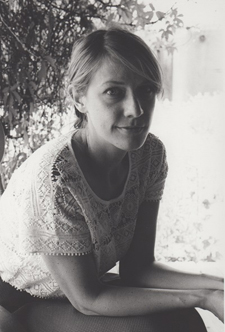 Caroline Jean Fernald
Caroline Jean Fernald
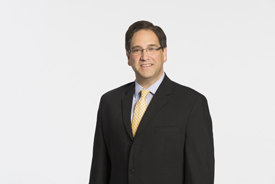 Leo G. Mazow
Leo G. Mazow
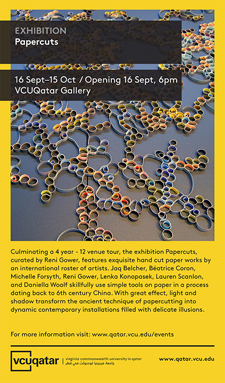 Invitation card for Papercuts
Invitation card for Papercuts
